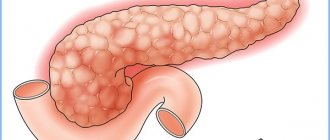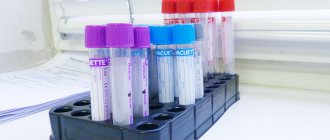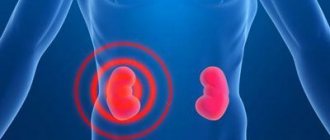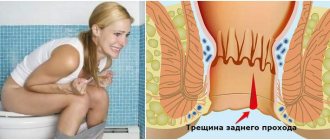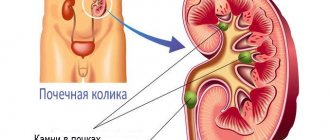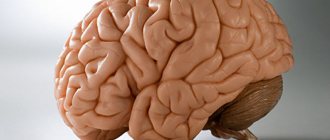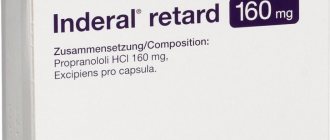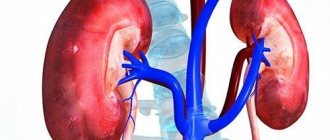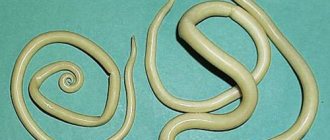- home
- Urology
- Nephroptosis (prolapse of the kidney)
Patent. Method of laparoscopic nephropexy
Nephroptosis (prolapse of the kidney) is excessive mobility and rotation of the kidney that occurs in an upright position of the body. Normally, during breathing and when the body moves, both kidneys move within the acceptable physiological norm, which should not exceed the height of the lumbar vertebral body (2–4 cm). Normally, the right kidney is located slightly lower than the left kidney. Nephroptosis is considered to be a displacement of the kidney in a vertical position of the body downward by more than 2 cm, and with a deep breath - by more than 3-5 cm; in addition, nephroptosis also refers to a condition in which the kidney rotates around the vascular pedicle.
The following degrees of nephroptosis are distinguished:
- I degree of nephroptosis - prolapse of the lower pole of the kidney more than 1.5 lumbar vertebrae
- II degree of nephroptosis - prolapse of the lower pole of the kidney of more than 2 vertebrae
- III degree of nephroptosis - prolapse of the lower pole of the kidney of more than 3 vertebrae
When a kidney prolapses, it can either remain stably low compared to the physiological norm, or return to its place when the body position changes - the so-called “migrating kidney”.
To determine the degree of nephroptosis and the severity of kidney dysfunction, as well as to choose the correct surgical treatment tactics, you must send me a complete description of standing and lying ultrasound of the kidneys, standing and lying ultrasound of the kidney vessels, intravenous urography and radioisotope scintigraphy data [email protected] kidneys, indicate age and main complaints. Then I will be able to give a more accurate answer to your situation.
Causes
Healthy kidneys have some anatomical mobility provided to them by nature. So, with a deep breath or physical stress, the organs shift by 1–2 cm. If the prolapse exceeds the specified norms, they speak of a pathologically wandering kidney or nephroptosis.
The appearance of such an anomaly is attributed to weakness of the abdominal wall and supporting structures or a decrease in the layer of perirenal fatty tissue. The factors that cause such changes are the causes of kidney prolapse.
Among them are:
- frequent pregnancies;
- fast weight loss;
- intensive development of the body, usually during puberty. In this case, adolescents with asthenic physique suffer from nephroptosis;
- lumbar bruise;
- congenital displacement of organs;
- anomalies in the structure of the skeleton (absence of lower ribs);
- natural weakness of the muscular-ligamentous apparatus (manifested by myopia, splanchnoptosis, hypermobility of joints).
Sometimes nephroptosis appears during prolonged, exhausting coughing attacks, severe constipation, or playing certain sports (basketball, bodybuilding).
The disease often occurs among people who work in hazardous industries and experience constant body shaking: drivers, excavator operators, bulldozer operators. Standing on your feet for a long time is no less detrimental to health, which is why kidney prolapse is a common disease among sellers and hairdressers.
In more than half of the diagnostic cases, nephroptosis of the right kidney is observed. The reason for this discrepancy lies in the initially lower localization of the organ due to the nearby liver. In addition, the right retaining ligament is much weaker than the left.
What are the degrees of the disease?
In medicine, there are three stages of development of nephroptosis. Let's look at each of them in detail:
- first. The kidney is in its place, but when you inhale it shrinks up to 9 centimeters, part of it can be felt in the area of the lower ribs. Manifested by dull pain in the lower back when rising from a lying position;
- second. When a person stands, the kidney descends 2/3 below the hips. As soon as the patient lies down, the organ returns to its place. During physical activity, the patient experiences pain that resembles colic in nature. When a person lies down, the pain subsides. The analysis shows the presence of red blood cells and protein in urine;
- third. The kidney descends below the rib line or into the pelvis. The pain is severe and constant. As a result of stagnation of urine, blood and mucus are found in it.
Symptoms
In the early stages of nephroptosis, the symptoms of kidney prolapse are not clearly expressed. The patient most often does not notice them or attributes them to something else, so the manifestations are insignificant:
- rare dull pain in the lower abdomen;
- aching in the lower back, especially after heavy physical labor;
- cloudy urine.
As the pathological process develops, the signs of nephroptosis noticeably intensify. The discomfort becomes more pronounced, there is an increase in temperature, nausea, and deterioration in health. Pain with severe prolapse of the kidneys becomes similar to renal colic and becomes unbearable.
Other symptoms of nephroptosis appear:
- swelling of the face and lower extremities;
- renal vein thrombosis;
- blood clots in the urine after exercise;
- increased blood pressure (usually in an upright position);
- loss of appetite;
- Gastrointestinal disorders (diarrhea, flatulence, nausea, vomiting);
- signs of pyelonephritis and hydronephrosis.
Due to the erasure of symptoms, manifestations of nephroptosis of the right kidney, as well as the left, are often confused with an attack of appendicitis, premenstrual pain or cholecystitis.
How to recognize nephroptosis?
When the kidneys descend, symptoms appear gradually, depending on the stage of progression of the pathology. The lower the organ goes, the more signs appear. Common symptoms include:
1. The back aches, the lumen of the blood vessels narrows, the outflow of urine and blood becomes less, and swelling appears. By stretching, the organ increases the fibrous capsule. It gives pain thanks to receptors.
Stage 1 is characterized by the occurrence of pain when standing or when changing position.
Stage 2 of the disease is expressed by attacks after exercise, lasting up to half an hour.
Stage 3 is represented by constant pain due to persistent swelling.
2. Blood in the urine. The phenomenon occurs due to the twisting of blood vessels and depletion of their walls. Urine acquires a burgundy hue as a result of mixing it with blood.
Classification
In clinical practice, the disease is usually divided into several stages, reflecting all changes in the localization, structure and functional state of the organ.
Due to established norms, there are 3 degrees of nephroptosis:
- nephroptosis 1st degree - no systemic renal disorders;
- nephroptosis of the 2nd degree - the disease often leads to kinking of the ureter and feeding vessels, increased pressure in the renal artery, and the addition of infections;
- nephroptosis of the 3rd degree - the organ completely leaves its designated place and descends into the pelvis.
At the first stage of illness, symptoms are mild. The diseased organ can be palpated in an upright position only in very thin people, so it is difficult to diagnose nephroptosis of the right kidney without the use of instrumental methods.
The second degree of damage is manifested by the movement of the organ to the hypochondrium, where it is easy to detect by palpation. At this stage, the kidney may twist around its axis (rotation), and chronic inflammation may develop. Stretching of the great vessels leads to a decrease in their diameter and deterioration of blood circulation.
At stage 3 of nephroptosis, the resulting kinks impede the outflow of urine, the inflammatory process causes adhesions and tightly fixes the kidney in an abnormal position. Perinephritis develops.
Preventive measures to avoid the development of pathology
With a prolapsed kidney, the consequences are very varied and dangerous to health. Disease prevention consists of the principles of a healthy lifestyle:
- balanced diet and diet;
- regular sports activities;
- excessive weights and heavy physical loads are excluded;
- the back is always straight;
- We don’t go hungry;
- We wear a bandage during pregnancy;
- protect yourself from injury and damage;
- We lose weight gradually.
Simple rules will help anyone protect themselves from nephroptosis
In the case of kidney prolapse, symptoms and treatment are interrelated. Signs influence the degree of development of the pathology, and it helps to choose a specific type of therapy. Don't study. It will lead to worsening of the disease and the development of concomitant pathologies.
When the kidney is prolapsed and it is not clear what to do, you need to go to the doctor. Only a specialist can make an accurate diagnosis and prescribe the only correct treatment.
Diagnostics
In the early stages, nephroptosis is difficult to identify, so making a final diagnosis includes not only questioning the patient and palpation, but also additional research methods:
- laboratory analysis of urine and blood;
- blood biochemistry for total protein, creatinine and urea;
- Reberg's test;
- radioisotope scanning;
- angiography;
- contrast radiography;
- Ultrasound of the kidneys.
An ultrasound examination is performed in an upright position to determine the degree of organ prolapse.
How is nephroptosis diagnosed?
Kidney prolapse is recognized through diagnosis. It includes the following steps:
- Patient interview. It is important for the doctor to know how long ago the symptoms began to appear and how severe they are.
- Feeling. A drooping kidney can be felt as a painful roundness in the area below the ribs.
- X-ray. Signs of a prolapsed kidney are visible when performing urography with a contrast agent while standing and lying down. Doctors find out the condition of the kidney vessels and its location.
- Analysis of urine for the presence of red blood cells, protein and leukocytes.
- Ultrasound of organs. Research rarely accurately makes such a diagnosis. After all, the procedure is carried out in a lying position, and the kidneys in this state return to their original place.
Treatment
Treatment of nephroptosis is carried out using conservative and surgical methods. Drug therapy is prescribed only in the event of a bacterial infection.
Conservative
Non-surgical treatment of kidney prolapse is performed at stages 1 and 2 of the disease in the absence of complications. The method includes a strict diet, massage and exercise therapy, wearing renal bandages, and sanatorium-resort recovery.
Nephroptosis allows the patient to do simple, strictly dosed exercises. You should exercise daily, first under the guidance of a physical therapy instructor, and then on your own. All exercises are performed from a supine position with a soft cushion placed under the lower back.
A diet for kidney prolapse is prescribed at stages 2 and 3 of the disease. Nephroptosis of the 1st degree does not require any special restrictions - during this period the patient must adhere to the principles of a healthy diet and not abuse salt, smoked meats and fatty foods.
If symptoms of nephroptosis develop, any extractive substances, carbonated and sweet drinks should be excluded from the diet, and protein consumption should be limited: strong meat broths, legumes, canned and smoked foods.
Helps treat nephroptosis and wearing a special bandage. It should be put on while lying down and strictly while exhaling, and removed before going to bed. Only a doctor should select a kidney corset. There are contraindications.
Operational
If conservative treatment does not have an effect, the patient is offered to eliminate kidney nephroptosis surgically.
Indications for the procedure are:
- severe pain;
- the appearance of complications;
- loss of performance;
- progressive expansion of the renal pelvis and calyces;
- persistent postural hypotension.
Today, laparoscopy is used for surgical treatment of nephroptosis. The method is characterized by low trauma, low blood loss and a quick recovery period.
Traditional methods
Treatment with folk remedies is most effective in the early stages of nephroptosis. Alternative medicine recipes can relieve swelling and pain during kidney prolapse, restore diuresis, and cleanse the urinary ducts.
Before using herbal medicine, you should consult your doctor and use it only as an addition to the main methods.
For nephroptosis, it is useful to eat unroasted flax, pumpkin and sunflower seeds. Pine nuts, walnuts and hazelnuts are good. Among medicinal herbs, it is recommended to choose lingonberry leaf, bearberry, corn silk, and chamomile flowers. Teas and decoctions are prepared from them, and sitz baths are made.
Complications
A migrating kidney at stage 1 is not dangerous and with timely treatment it is possible to stop the development of the disease. However, in 20% of cases it can lead to the following complications:
- Hydronephrotic transformation is characterized by an enlargement of the pyelocaliceal system of the kidney against the background of impaired urine flow. Under the pressure of urine, organ dysfunction occurs. An enlarged kidney puts pressure on neighboring organs and also impairs their functioning.
- Pyelonephritis is an inflammatory pathology of infectious etiology. It affects the pyelocaliceal system and the renal parenchyma. In the absence of timely therapy, it leads to impaired diuresis and renal failure.
- Hypertension. Prolapse of paired organs leads to pinching of the renal artery and disruption of blood flow, which entails an increase in intrarenal pressure and, against its background, an increase in arterial values.
- Excessive mobility of the organ can cause congestion, which in turn leads to retention and sedimentation of salts in the kidneys - urolithiasis develops.
- During gestation, a migrating kidney can cause spontaneous abortion.
In the absence of treatment effectiveness, nephroptosis of the 1st degree on the left and right develops into the 2nd, and later the 3rd stage. Thus, at the first stage of the disease, a slight displacement of the lower pole of the organ occurs by one vertebra. As it progresses, the kidney shifts by 2 vertebrae of the lumbar spine - stage 2 nephroptosis develops. With grade 3, paired organs descend by 3 or more vertebrae.
If at stage 1 of nephroptosis the clinical picture is mild, then at stages 2 and 3 the pain syndrome is constant, and other symptoms increase. With grade 3 pathology, the patient may develop pyelonephritis, nephrolithiasis, hydronephrotic transformation and hypertension.
What is nephroptosis? This is a pathological displacement of the kidney from its anatomical bed. The disease is associated with dysfunction of the fixing apparatus, which is caused by sprained ligaments, thinning of the fatty capsule of paired organs, or weakening of muscle tone. At the first stage, the pathology does not cause discomfort; only with physical exertion is it possible that the general condition worsens and a feeling of pain in the lumbar region occurs on the part of the diseased organ.
Prevention
Prevention of the disease should begin in childhood, even before the dangerous period of adolescence, when the child’s body ceases to have time to respond to the rapid growth of skeletal bones, and against this background, displacement of organs from their physiological nests occurs. The child must be accustomed to regular physical exercises aimed at developing correct posture and strengthening the anterior abdominal wall, must be aware of the danger of receiving direct blows to the stomach, and trained in competent tactics of behavior in cases of falls and traumatic situations.
Pregnant women should not ignore examinations in the gynecological office, avoid ultrasound examinations, or refuse to undergo additional tests if their need is justified by the threat of the disease. From 28 weeks of pregnancy, all women are recommended to wear a prenatal elastic bandage, and for women at risk for polyhydramnios or the presence of two or more fetuses, from 20 weeks of gestation.
People who are forced to remain in an upright position for long periods of time as part of their work duties or are exposed to vibration, such as drivers of heavy-duty vehicles, are also recommended to undergo periodic examinations by a nephrologist. And if there are risks, wear a bandage periodically and exercise regularly.
Both in the treatment of nephroptosis and as a prevention of any diseases associated with the functioning of the urinary system, systematic action is important. If there is a need to give up some type of food, “breakdowns” that are then consumed with pills are unacceptable; if prescribed, you should perform a complex of physical therapy or wear a bandage; You can’t give your body a “day off” in the hope that it won’t affect your health.
Nephroptosis, which has passed into the third stage, is a practically irreversible process, which, of course, can be interrupted, but it will never be possible to completely return to the state of health that preceded the disease. Therefore, even people who take their health seriously and follow preventive measures need to consult a nephrology specialist from time to time.
Diet
How effective is the treatment of nephroptosis of the right kidney with diet? Of course, it is impossible to ensure that the kidney returns to its place with diet alone, but it is also impossible to call treatment that does not regulate the load on the diseased organ complete. The diet is prescribed with strict consideration of the patient’s weight, and can be aimed at either increasing body weight or gradually reducing it. It is important to understand that excessive thinness is the same obstacle to a positive result of therapy as excess weight.
The basic rule of nutrition for nephroptosis is to split the daily food intake into 6 meals, drinking at least 2 liters of water (still) per day in between meals.
Not allowed for consumption:
- all legume products;
- pickles, marinades;
- smoked, dried cheeses, meat, fish;
- any products made from premium flour;
- all pastry creams, sweet sauces, syrups.
It is strictly forbidden to drink any carbonated drinks (except for small volumes of mineral water specified in the treatment tactics), strong tea and coffee. If the disease has entered the third stage and there are foci of inflammation, it is necessary to limit protein intake to 25 g per day. In case of complications such as kidney failure and kidney stones, all types of cereals and products made from any flour, as well as foods rich in phosphorus, are excluded from the diet.
For all forms of pathology, the following are encouraged in the diet:
- boiled vegetables and fresh fruits;
- cottage cheese;
- milk and dairy (fermented milk) products;
- mashed potatoes;
- white chicken meat;
- lean boiled fish.
Emphasis on any one type of product to the detriment of another is not allowed - nutrition must be rational and subject to its intended purpose.
Way of life with nephroptosis
In addition to therapeutic physical exercises, the patient is required to adhere to a special diet. Food should be high in calories and contain a minimum amount of salt. For each patient, the diet is prescribed individually, depending on the degree of kidney prolapse, the patient’s condition and a number of other factors.
The diet for nephroptosis should be balanced. The diet should include:
Cottage cheese and dairy products are recommended to be included in the diet of patients with nephroptosis
Such products are excluded completely:
- strong broths;
- confectionery (cakes, creams);
- canned food and pickles.
Canned food and pickles are excluded from the daily menu if kidney function is impaired.
Heavy lifting and prolonged physical work are contraindicated in case of bilateral nephroptosis.
Features of kidney prolapse in childhood
In children, the disease is especially common and is associated with intrauterine disorders of the development of the ligamentous apparatus. Weak muscles, which are often individual characteristics of the body or occur due to serious illnesses, can provoke kidney mobility in children.
Spinal curvatures can contribute to the onset of pathology at an early age. The disease progresses as it grows and develops. The degree of nephroptosis becomes more severe. Impaired muscle tone can occur after pathologies such as enterocolitis, whooping cough, bronchitis, etc. Rickets is the most common predisposing factor in the development of kidney mobility in children, so it is important to prevent this disease.
Causes and factors contributing to the development of the disease
Nephroptosis is quite often confused with a congenital pathology of improper arrangement of internal organs. However, unlike the latter disease, its formation is directly caused by destructive processes in the fixation apparatus of the kidney: the fascial bed, peritoneum, diaphragmatic plate, muscular frame of the lumbar or abdominal wall, capsule and ligamentous apparatus. The organ's increased ability to move may also be directly due to low fat content and abnormal alignment of arteries, veins, nerves and lymphatic vessels.
Almost all girls and women with a body mass index are at risk of developing kidney prolapse.
Table: factors in the formation of bilateral nephroptosis
| Congenital factors | Acquired factors |
| Instability of the lumbar spine | Sharp weight loss in a short period of more than 5–10% of initial body weight |
| Duchenne muscular dystrophy (a genetic disease characterized by the development of insufficiently strong muscle groups in the lower back in the patient) | Traumatic injuries of the pelvic organs and retroperitoneum |
| Congenital malformations (improper formation of organs in the embryonic period, changes in the chest) | Multiple pregnancy (pressure of the fetus on the wall of the enlarged uterus and displacement of organs relative to the median axis) |
| Deformation of the baby's torso during the birth period | Bruises and tissue damage to the lower back |
| Infectious diseases | Muscular dystrophy |
| Connective tissue diseases | Past comatose states |
| Innervation disorders of the lumbar muscle groups | Frequent lifting of weights |
| Cerebral palsy | Participation in work at great depths in the area of high atmospheric pressure |
| Complete or partial limitation of mobility (being in a wheelchair) | Working under the influence of industrial chemicals and toxic substances |
Symptoms and signs of prolapse of both kidneys
Doctors estimate that "wandering kidney" is asymptomatic in approximately 80% of patients with this condition. This means that most people with kidney prolapse do not know anything about their pathology. At one time, scientists even had serious disputes as to whether nephroptosis should be classified as a medical diagnosis due to the inconsistency of symptoms. In reality, too often, signs of renal ptosis are initially diagnosed as other diseases of the genitourinary system or gastrointestinal tract.
But in 20% of patients, symptoms are still present and can be quite intense.
- Pain. One of the main symptoms of nephroptosis is dull pain. It can be felt by the patient both in the side and in the lower abdomen. The specific nature of the symptom is such that it occurs or intensifies with an upright position of the body and completely disappears or subsides when lying down. Strenuous physical work or heavy lifting provokes the appearance or intensification of discomfort, and in advanced stages it is painful for the patient to even sneeze and cough. Over the years, the disease tends to progress.
- Attacks of renal colic. Often, nephroptosis in patients causes acute renal colic due to stagnation of urine and impaired circulation in the kidneys. During an attack, a person suffers from intense obsessive pain when changes in body position do not help. The patient becomes covered in sticky sweat. Such an attack is accompanied by reflex muscle spasms. They can cause vomiting and involuntary bowel movements. Signs of an attack include:
- pale skin;
- drop in blood pressure;
- increase in heart rate.
If you suspect renal colic, you should call an ambulance
In severe cases of bilateral nephroptosis, flu-like symptoms may occur, although a wandering kidney is not an infection. In fact, these symptoms are largely related to impaired kidney function:
- nausea;
- vomit;
- chills;
- tachycardia - accelerated heartbeat.
This severe manifestation of nephroptosis, along with kidney pain and urinary tract abnormalities, which may masquerade as a gastroenterological problem, is in fact a syndrome of episodic abdominal pain of urological origin. The condition requires urgent medical attention.
What is bilateral nephroptosis
The kidneys are a paired organ of the urinary system. In humans, they are located in the lumbar region on both sides. But they are not placed at the same level, but with a difference approximately the thickness of one vertebra: the right kidney is normally lower than the left, since it borders the liver at the top.
The kidneys are a paired organ that purifies the blood and produces urine.
The kidneys can sometimes move slightly and this is normal. “Migration” of 2 cm is considered acceptable. During inhalation, this figure increases to 3–5 cm. Excessive mobility or rotation of the kidney has a medical name - nephroptosis, or “wandering kidney”. This pathology is often unilateral and, as a rule, diagnosed on the right. Bilateral nephroptosis is observed quite rarely.
Nephroptosis is more a female problem than a male one. At risk are people from 35 to 65 years old.
Stages of the disease and their manifestations
The clinical course of the disease has several stages, or stages:
- The first is when the organ is lowered by about one and a half vertebrae in the lumbar spine.
- The second is that the kidneys are displaced lower than two vertebrae.
- The third is pronounced prolapse, up to the localization of the organ in the pelvic area.
Bilateral nephroptosis has three stages (degrees)
The third stage of the pathology may be accompanied by severe kinking of the ureters, which is fraught with acute stagnation of urine and severe attacks of renal colic. The general clinical picture of the disease can be complicated by renal hypertension, the presence of stones, pyelonephritis, etc.
Large vessels (veins and arteries) and ureters depart from the kidneys
In addition, each kidney has large blood vessels - the renal artery and vein, which are wide and short in structure. When the kidney is forced out of its physiological zone, the organ’s vessels are forced to adapt and deform: overstretch or twist. Thus, conditions arise for the development of a dangerous inflammatory process of the kidneys - pyelonephritis.
Nephroptosis - video
The main methods of treating prolapse of the right kidney
With nephroptosis of the 1st or 2nd degree, it is extremely important to consult a doctor in a timely manner so that the disease does not progress further. Based on data about the patient’s health condition, doctors can choose the optimal treatment option for each person. If the patient is stable, he is prescribed auxiliary pharmaceuticals and wearing orthopedic structures to support the organ. It is also necessary to follow a diet and monitor body weight and its dynamics. If the patient’s condition is more severe, doctors consider the need for surgery.
The main goals of treatment for right-sided nephroptosis are:
- prevention of further kidney prolapse;
- strengthening the immune system;
- reducing the severity of pain;
- protection against infectious complications;
- reducing the risk of metabolic disorders.
Table: drug therapy for pathology
| Drug group name | Examples of active ingredients | Effects of the appointment | When to take |
| Nonsteroidal and steroidal anti-inflammatory drugs |
| Reduce the severity of pain and pulling sensations | Before surgery if unpleasant symptoms appear |
| Antispasmodics |
| Relieves muscle tension and reflexively eliminates spasms | |
| Antiplatelet agents |
| Prevents the formation of thrombosis and embolism | After surgical treatment |
| Antibiotics |
| Reduce the likelihood of infection and improve wound healing | |
| Vitamin and mineral complexes |
| Restores the need for nutrients | During the rehabilitation period |
Photo gallery: medications for symptomatic therapy
Clopidogrel reduces the risk of thrombosis
Nimesil reduces inflammation
No-spa relieves spasms
Folk remedies to eliminate the manifestations of the disease
In some cases, you can get rid of unwanted signs of illness and strengthen your immune system using natural recipes. Plants, flowers, herbs and fruits also have healing properties and can replace some medications. However, do not forget that folk remedies can cause an allergic reaction in sensitive people: therefore, it is better to always keep antihistamines (Loratadine, Suprastin, Claritin) nearby.
The most popular home recipes to combat illness:
- Place 50 g of lingonberries and the same amount of blackberries in a saucepan with a liter of boiling water and cook for half an hour. After cooling, add cane sugar or honey to taste. Drink 1 glass of the product after each meal. These berries have antiseptic activity and help remove most toxins from the body. The course of treatment consists of 20 daily procedures.
- Brew 20 g of yarrow in a glass of boiling water and leave for 6 hours. After the specified period has expired, drink the product before any meal. Yarrow helps improve blood circulation and lymphatic drainage, which has a beneficial effect on the regeneration process of kidney tissue. It is recommended to use this method at least 2 times a week for a month.
- Pour 50 grams of dried and crushed thistle into a liter of vodka and leave in a dry, dark place for 30 days. Next, use 10 drops of the product daily, adding it to a glass of water. This helps strengthen the immune system and relieves discomfort. The course consists of 50 daily procedures.
Photo gallery: folk remedies for the treatment of disease
Lingonberries are a source of vitamin C
Thistle strengthens the immune system
Yarrow improves blood flow
Video: kidney treatment at home
Application of individual orthopedic structures
To reduce the load on the lumbar region, fix the kidney in the correct position and cope with unpleasant sensations, special bandages are used. They are orthopedic structures made of elastic, moisture-resistant fabric that fit the lower back. Bandages can have a dense frame in the form of bones, which ensures reliable fixation. You can choose the best option for yourself after consulting with a specialist.
This orthopedic design must be worn daily throughout the day. In especially severe cases, doctors insist that the victim not remove the bandage even while sleeping. If for some reason this condition is not met, the expected effect is significantly reduced.
One of my patients with stage 1 nephroptosis of the right kidney purchased such a bandage and wore it for six months. Thanks to constant support and fixation, it was possible to return the organ to the desired position even without surgery. Currently, the patient feels well, visits the doctor annually and puts on a bandage every 3 months for 1.5–2 weeks to prevent relapse of nephroptosis.
Photo gallery: various types of orthopedic structures
A bandage with bones allows not only to fix the kidney, but also to strengthen the back muscles
A single-layer bandage is effective for stage 1 kidney prolapse
A two-layer bandage is used for 2nd degree nephroptosis
Surgical treatment of pathology
If conservative therapy for six months does not bring the expected results, and the prolapse of the kidney progresses, doctors decide to perform surgery. It is carried out only if the patient does not have the following indications:
- severe diseases of the cardiovascular and nervous system (stroke, heart attack);
- tendency to thrombosis and embolism;
- the presence of sepsis or infectious-toxic shock.
During the operation, the kidney is returned to its place and additionally fixed.
The operation to fix the kidney is called nephropexy. It is carried out in several stages:
- Treating the surgical field with an alcohol solution. This will avoid infection.
- Layer-by-layer dissection of soft tissues: skin, fat, muscles. Next, a clamp is applied to the kidney vessels to avoid possible blood loss.
- Moving the organ to its original position (to the level of the first lumbar and last thoracic vertebrae). Sutures are used to fix the kidney to the peritoneum, psoas muscle or last rib (this method is used extremely rarely).
- The wound is sequentially sutured; if necessary, a drainage is inserted into one of its corners to drain the pathological contents. A bandage is applied on top.
Dietary nutrition for nephroptosis of the right kidney
When fighting such a disease, the patient must be extremely scrupulous about his diet. Remember that any weight gain or loss can lead to additional displacement of the organ and cause serious complications. The calorie intake is calculated by the doctor based on the patient’s body weight, age and gender, as well as the desired result and averages from 2500 to 4000 units.
During the treatment period, you should avoid fast food, fast food, alcohol and carbonated drinks, as they slow down metabolic processes in the body.
Sample menu for patients with right-sided nephroptosis:
- Breakfast. Omelette of 2 eggs with milk, toast with goat cheese and ham. For dessert - whole grain cookies or dried fruits, marshmallows or marmalade without dyes.
- Dinner. Lenten soup (borscht, rassolnik, cabbage soup, chicken) with lean meat. Vegetable salad of cabbage, radish and beets, dressed with olive oil.
- Dinner. Boiled or baked vegetables mixed with cereals (buckwheat, rice, couscous, pearl barley). Chicken breast or turkey with creamy sauce.
- Snack. Any vegetables and fruits, cottage cheese, yogurt or kefir.
Photo gallery: healthy food
Cottage cheese is the best source of calcium
Vegetables and fruits are high in carbohydrates and are an excellent snack option.
Cereals improve digestion
What anatomical disorders cause nephroptosis?
In their normal position, the kidneys are held in place by special fascia, but due to a number of provoking factors, the organs can become displaced. Disturbances in the functioning of the liver, accompanied by changes in its size, contribute to the occurrence of pathology. A wide pelvis in women is also a predisposing factor.
Left-sided nephroptosis is less common than pathology on the right side. The kidneys are surrounded by fatty tissue that forms a pouch. If intense weight loss occurs, then such a structure becomes thinner, as a result of which the organ becomes mobile and is no longer so tightly fixed in one position.
Nephroptosis of the kidney is a pathological mobility caused by weakening of the ligamentous apparatus. Normally, the organ can move several centimeters when inhaling and other actions. Unilateral lesions are more common.
In children
Nephroptosis in children can be caused by congenital pathologies. Sometimes the disease is a consequence of an acquired disease. Typically, children's kidneys are below the normal limit. They reach a normal position only by the age of eight.
It is of great importance that the child goes through puberty. In this case, nephroptosis in children manifests itself precisely in this age category. This is also due to changes in body proportions, especially during rapid growth.
Some diseases may accompany childhood nephroptosis. Including infectious ones. These include the following diseases:
- whooping cough;
- colitis;
- rickets.
Rickets is of great importance. Since it is with rickets that deformation of the skeleton occurs. Decreased muscle tone. If the child is thin, this also contributes to the development of nephroptosis.
The symptoms of nephroptosis in children are not pronounced. Mostly pain occurs during physical activity. The pain may be stabbing.
Dyspepsia and neurasthenic symptoms are extremely rare. Edema is characteristic in some cases. This is especially true for puffiness under the eyes, which occurs when drinking large amounts of liquid.
In any case, urgent medical attention is required. The child must be taken to a medical facility. Especially with severe pain, for which bed rest is prescribed.
go to top
